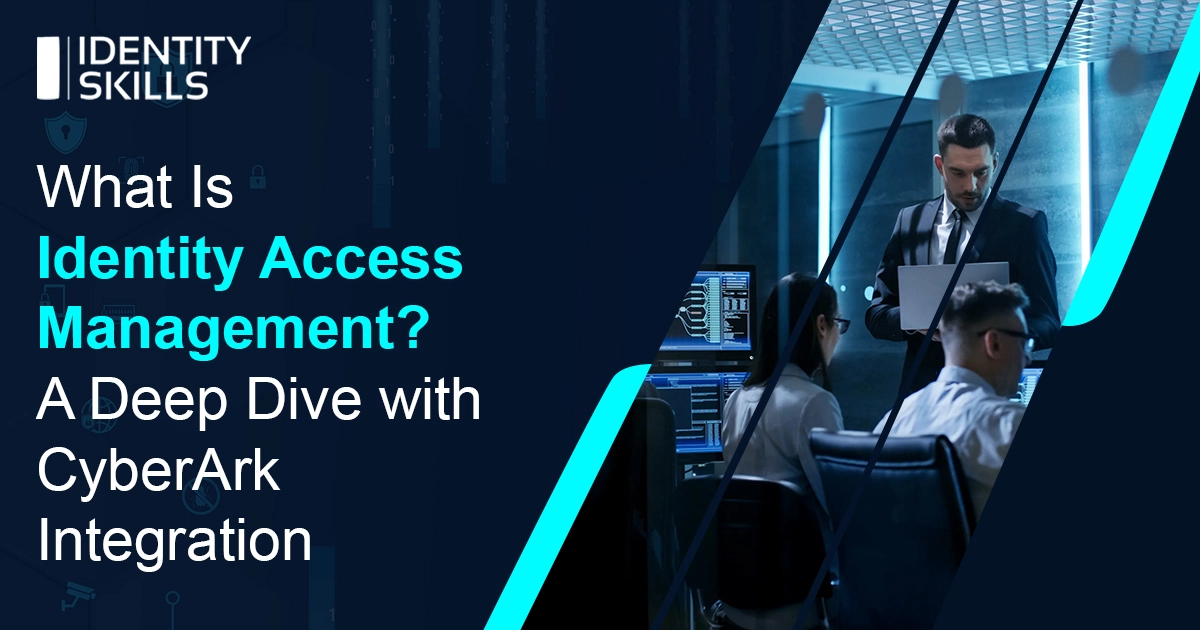In the modern digital-first age, with cyber attacks increasing and data breaches a regular occurrence, controlling who has access to what across an organization has never been more important. That’s where Identity and Access Management (IAM) comes in—a core building block of any sound IT security strategy. But just how does IAM operate, and what is CyberArk’s role in maximizing its impact?
This blog is going to break it down for you—easy and clear.
What is Identity and Access Management (IAM)?
Identity and Access Management (IAM) is a set of policies, technologies, and processes that helps companies ensure the right individuals have the right access to the right resources at the right time—and for the right reasons.
At its simplest, IAM gives answers to three fundamental questions:
- Who are you? (Authentication)
- What can you access? (Authorization)
- Are you indeed who you say you are? (Verification)
IAM governs users’ identities in the digital world (employees, customers, third parties) and controls their access to business systems, data, applications, and services. It’s not just logging in; it’s about accessing the right thing with as little risk as possible.
Why Is IAM So Important Today?
It’s this simple:
Here’s why IAM is an absolute necessity:
- Security: Prevents unauthorized access and reduces insider threat and breach risk.
- Compliance: Enables compliance with legislation like GDPR, HIPAA, SOX, and ISO 27001.
- Operational Efficiency: Automates user provisioning/deprovisioning, releasing IT time.
- Scalability: Supports access management irrespective of organizations growing or adopting new technology.
Key IAM System Components
- Authentication: User authentication—via passwords, biometrics, MFA, etc.
- Authorization: Granting access rights by role, policy, or context.
- User Lifecycle Management: Creating, editing, and removing user accounts.
- Single Sign-On (SSO): One logon for many applications.
- Multi-Factor Authentication (MFA): Adds a second layer of login security.
- Access Reviews & Audits: Tries to maintain compliance and detects anomalous access patterns.
- Privileged Access Management (PAM): Protects access to valuable systems and data (this is where CyberArk shines).
What Is CyberArk
CyberArk is a global Privileged Access Management (PAM) market leader—a component of IAM with a sole focus on safeguarding privileged accounts like IT admins, root users, and service accounts. These are high-access accounts that are usually the number one cyber attacker target.
CyberArk secures, monitors, and manages privileged access in cloud, on-premises, hybrid, and DevOps environments.
How CyberArk Complements IAM
While IAM manages user access in general, CyberArk adds an extra layer of security to protect high-risk, high-access accounts. Here’s how CyberArk enhances your IAM approach:
1. Privileged Account Security
CyberArk safely stores credentials in a digital vault, automates password rotation, and uses tight access controls to ward off credential theft.
2. Session Monitoring and Recording
Every privileged session can be monitored and recorded in real-time—ideal for audits, investigations, and compliance.
3. Just-in-Time Access
With CyberArk, privileged access is on-demand and temporary, reducing standing access that could be compromised.
4. Risk-Based Access
CyberArk can integrate with SIEM or threat intelligence tools to approve or deny access based on real-time risk assessment.
5. Seamless Integration with IAM Tools
CyberArk works seamlessly with identity providers like Okta, Azure AD, Ping Identity, and other IAM platforms, offering a single methodology to security access.
Real-World Example: IAM with CyberArk in Action
Assume that your business uses Active Directory to verify employees. Your IAM system takes care of regular logins and access to internal applications. However, your IT admin needs to access critical servers.
- This is the IAM with CyberArk workflow:
- The admin logs in via IAM (authenticated).
- IAM verifies identity and transfers the session to CyberArk.
- CyberArk grants temporary access to the server, logs the session, and revokes access when the job is done.
- Logs are stored for auditing.
This multi-level security model gives limited access with total control.
Benefits of IAM with CyberArk Integration
- End-to-End Visibility: Full audit trail of who did what, when, and how.
- Zero Trust Security Model: CyberArk facilitates the “never trust, always verify” principle.
- Least Privilege Enforcement: Only systems and users are given access they actually need.
- Decreased Attack Surface: Avoids lingering credentials and limits lateral movement during a breach.
- Regulatory Readiness: Helps meet security and compliance needs with assurance.
Challenges Without IAM & PAM
- Siloed systems and access gaps
- Unsecure or reused passwords between applications
- Admin accounts with complete access with no monitoring
- No audit trail of who accessed what and why
- Greater risk of insider threats, phishing, and ransomware
Conclusion
Identity and Access Management is no longer a choice—it’s a business investment. And whereas IAM secures your access environment overall, CyberArk provides razor-sharp emphasis on privileged access, the most exposed and risky vector for attackers.
By including CyberArk in your IAM plan, you’re not merely erecting a wall, but a thinking fortress—one that learns, secures, and grows with your organization’s requirements.
Learn CyberArk?
If you’re an upper-level professional looking for special PAM training, practical CyberArk training is a high-return step in the right direction. If you’re an IT administrator, security engineer, or compliance officer—CyberArk skills are needed.

